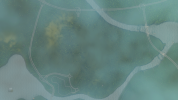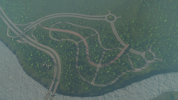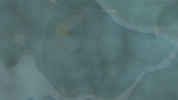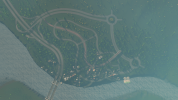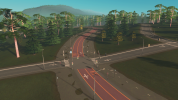One of my favourite games of all time is Cities: Skylines, which is no surprise considering my love for designing fictional civilisations. I have created at least a dozen different cities but one of the biggest issues plaguing all of these is they have all become gridlocked as the game has progressed. While the program does remove traffic if there has been a bottleneck for a while, this scenario obviously cannot happen in real life. I'd be interested to hear from some industry experts on how you would go about designing a congestion free transit-friendly city using this game, either from scratch or editing an already existing map.
Considering the need to have roads for emergency service and city service vehicles (waste collection etc), a 100% traffic free scenario is unlikely to be realistic, however my aim would be to get to as little car ownership as possible by enhancing the transit options available at the most efficient cost. I have the Mass Transit expansion pack which gives me access to Buses, Metro, Train, Ferry and Cable Car, so have plenty of options available. The point is that I would try and avoid using modes which are in excess of what is required for demand, so for example using Metro (above ground) for local lines rather than Train. Using buses for these flows would be inefficient as they would only create even more congestion for the demand that is required.
I would also try and design demand around the major hubs, so for example only zoning high density outside major transportation hubs, and industrial near to freight rail terminals and seaports. It always gobsmacks me at the start of the game when you zone industrial since the local roads always get clogged up with trucks. Maybe I just zone buildings too close together, but then if you place them further apart you end up spending far more on power lines.
Another question is what sort of map I should use for my "transport utopia" metropolis. Many of the default in-game maps are pretty generic with not many mountains or water features, but choosing such a map would give me more of a challenge to work towards and make the game more interesting (a city with boats or cable cars as its fastest mode of travel hey). Alternatively, I could build my city based on a Runcorn style model with busways and low density dwellings, or a Milton Keynes style one starting with a series of small settlements before joining them together with high density development later on in the game.
If I can find them, I will attach some screenshots of a previous transit-friendly development I attempted to create. I focused everything on one central railway station with a connecting bus network converging on it, but the amount of buses has led to the densely-packed central area becoming very congested. I always seem to have this problem with buses converging in the same place within a city centre, hence my idea to solely use Metro or Train for these flows and leave buses for the lower density flows.
Considering the need to have roads for emergency service and city service vehicles (waste collection etc), a 100% traffic free scenario is unlikely to be realistic, however my aim would be to get to as little car ownership as possible by enhancing the transit options available at the most efficient cost. I have the Mass Transit expansion pack which gives me access to Buses, Metro, Train, Ferry and Cable Car, so have plenty of options available. The point is that I would try and avoid using modes which are in excess of what is required for demand, so for example using Metro (above ground) for local lines rather than Train. Using buses for these flows would be inefficient as they would only create even more congestion for the demand that is required.
I would also try and design demand around the major hubs, so for example only zoning high density outside major transportation hubs, and industrial near to freight rail terminals and seaports. It always gobsmacks me at the start of the game when you zone industrial since the local roads always get clogged up with trucks. Maybe I just zone buildings too close together, but then if you place them further apart you end up spending far more on power lines.
Another question is what sort of map I should use for my "transport utopia" metropolis. Many of the default in-game maps are pretty generic with not many mountains or water features, but choosing such a map would give me more of a challenge to work towards and make the game more interesting (a city with boats or cable cars as its fastest mode of travel hey). Alternatively, I could build my city based on a Runcorn style model with busways and low density dwellings, or a Milton Keynes style one starting with a series of small settlements before joining them together with high density development later on in the game.
If I can find them, I will attach some screenshots of a previous transit-friendly development I attempted to create. I focused everything on one central railway station with a connecting bus network converging on it, but the amount of buses has led to the densely-packed central area becoming very congested. I always seem to have this problem with buses converging in the same place within a city centre, hence my idea to solely use Metro or Train for these flows and leave buses for the lower density flows.

